The 1980s had seen the action film genre sputter into near extinction. This near oblivion left the 1990s with an immense task to revive the action genre. A solution to that predicament was to insert satire, parody, and social commentary into the bracket. This implementation allowed these newfound action films to explore high conceptual themes while retaining drag-out-brawl excitement.
This resulted in much more impactful action films with design, exhilaration, and endurance. Demolition Man starring Sylvester Stallone and Wesley Snipes checked every box pertaining to a brutal action film sealed within a sophisticated Sci-Fi premise. Here are the Top 10 Moments in Demolition Man.
John Spartan Vs. Simon Phoenix
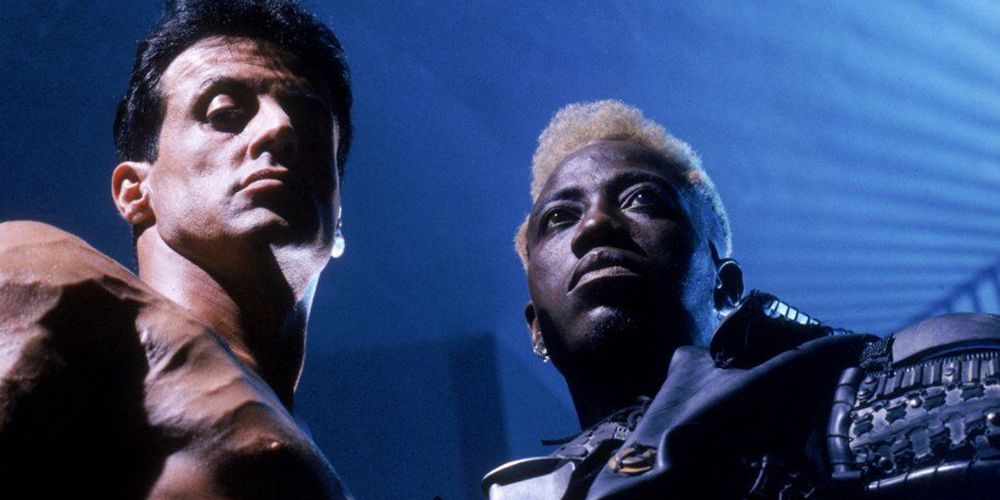
Detective John Spartan, portrayed by Sylvester Stallone, faced off against the violent criminal, Simon Phoenix, played by Wesley Snipes. Their names along with their characters were a distinct parody to the square-jawed and muscle-chiseled personalities within action films. In the world of Demolition Man, Spartan and Phoenix were walking caricatures within a world that could not fathom how they existed at all. This concept was put on display literally and figuratively within an action scene set in a museum’s “Hall of Violence” exhibit. It was home sweet hell when Spartan and Phoenix stumbled onto an armory that held nearly every setting cliché within the action genre.
Cryo-Rehabilitation
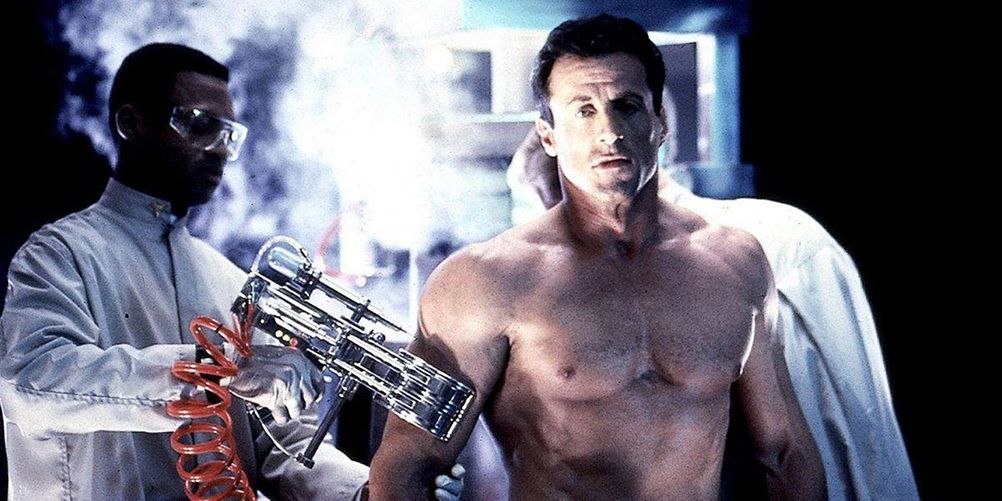
Demolition Man’s premise hinged upon the character of John Spartan awakening to a brave new world free from offense. Spartan was wrongfully accused of the deaths of thirty hostages held by Simon Phoenix. That negligence led to Spartan’s cryo-imprisonment for seventy years by Cocteau Industries. Thirty-six years into his sentence, Spartan was thawed out by San Angeles Police Department for the purpose of apprehending Simon Phoenix. Spartan’s afresh skill of knitting was a comedic contrast implemented into his cryo-stasis of rehabilitation. However, what was overlooked by Cocteau Industries was Spartan’s consciousness during his frozen incarceration. The fact that Spartan sensed his family’s presence during their visitations was a torturous element to his character.
Lt. Lenina Huxley

A break from the norm could create an opportunity to be well. That was the purpose of Detective Lenina Huxley’s character in Demolition Man. Sandra Bullock portrayed Huxley as a free-spirit with borderline hipster tendencies. The film’s production design conveyed Huxley’s craving for action. She cocooned herself in memorabilia and pop-culture from the 1990s.
The offense free and pristine demeanor of society bored her to the point where she longed for something new…even if it came from a sliver of chaos. That ideal fed into the irony of striving for perfection, achieving it, and becoming exhausted from it. A little salt on some Taco Bell never hurt.
S.A.P.D
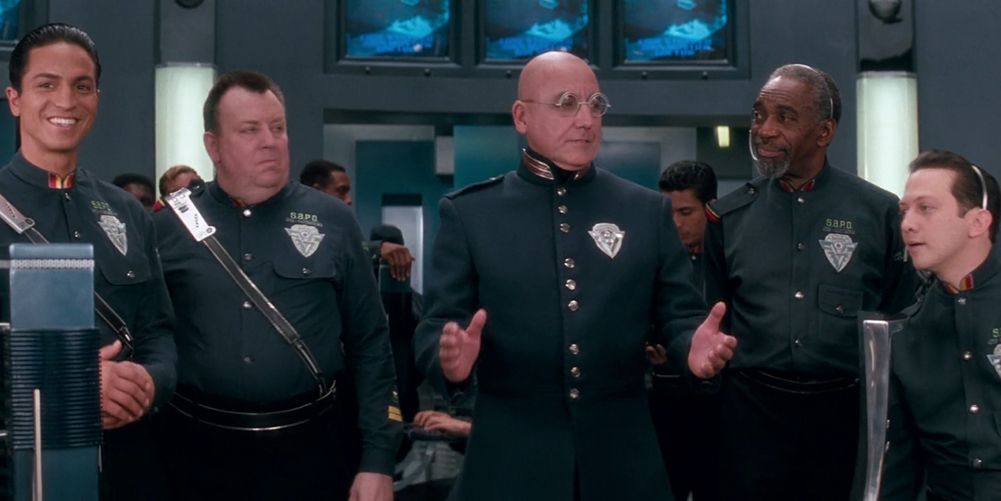
One of the successful facets of Demolition Man was its comedic tendencies in the wake of irony and satire. The San Angeles Police Department could be considered a laughing stock due to their incompetence to subdue any adversary. This was expected because of the violence-free society they had become accustomed to. Once Simon Phoenix reared his vicious head, the S.A.P.D was thrown into a disarray of madness. “Extreme assertiveness” did not cut it in response to a frenzy-filled felon like Simon Phoenix. The S.A.P.D begrudgingly decided to fight fire with fire by thawing out John Spartan to capture Simon Phoenix. The S.A.P.D found themselves in jaw-dropping disgust at the barbaric tendencies displayed by these cavemen.
Simon Phoenix

Truly the unraveler of serenity, Simon Phoenix, represented anarchy in Demolition Man. Wesley Snipes perfectly portrayed an unchained villain that could not be tamed. The irony swirling around Phoenix was the fact that he could be considered a metaphor for freedom in the world of Demolition Man. He was as much an artifact of freedom as John Spartan was. They were each the yin to their respective yang. As Spartan was an enforcer of the law, Phoenix was the flipside to breaking the law. As Simon Phoenix stated, “You can’t take away people’s right to be [expletive deleted]”. Careful, don’t want to be fined too many credits now.
Foreshadowing & Contrast
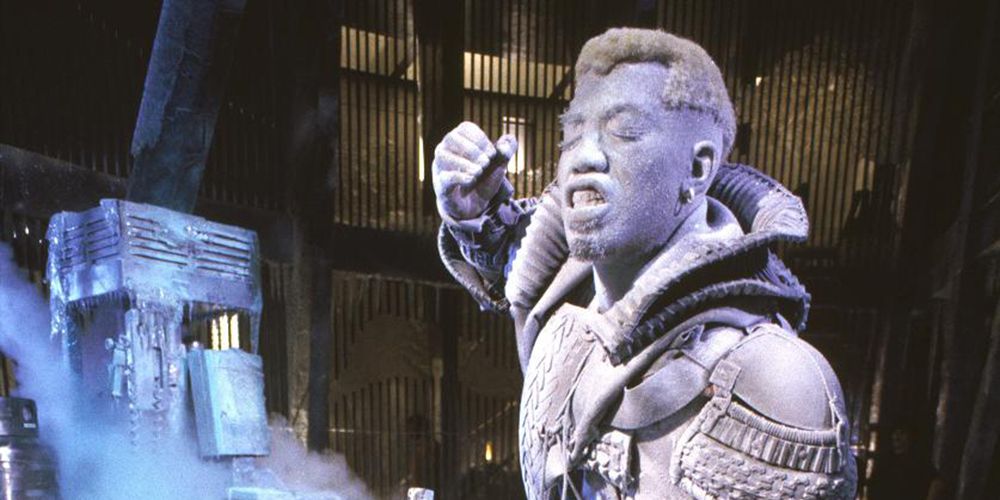
Demolition Man’s great writing lent itself to excellent design opportunities. The script showcased an immense amount of contrast pertaining to the past and future. The opening scene of the film quite literally began in a fiery hellscape of Los Angeles. The tangerine tinge of the flames ravaging Los Angeles provided a superb backdrop for the physical battle between John Spartan and Simon Phoenix in 1996. The film’s story unraveled to a blizzard-like climax within the cryo-prison of Cocteau Industries. Once again, the old vendetta between Spartan and Phoenix is thawed out for brutal display. Contrasting the blazing opening, the two duke it out in a frigid ending while the blistering blue highlights of the ice haloed them.
John Spartan, The Anachronism
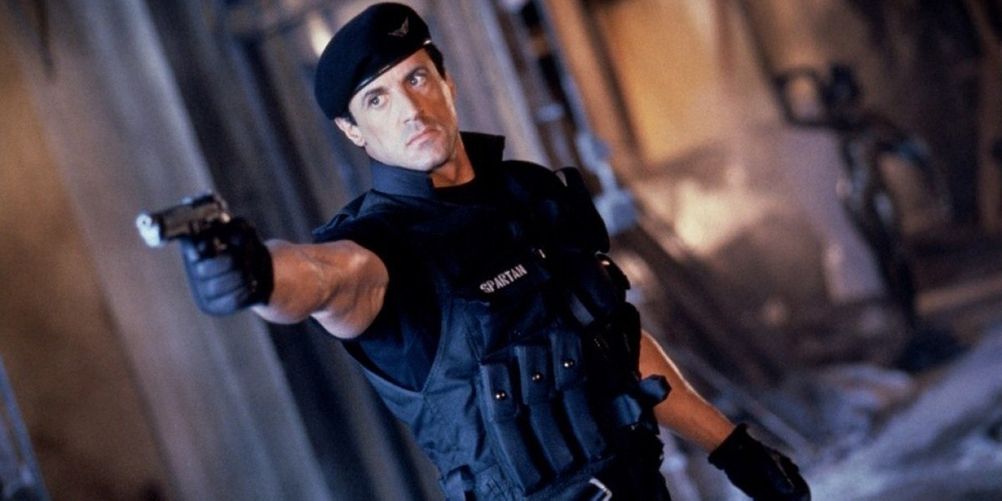
The premise of Demolition Man was a brilliant one that allowed for a world to be built and reveled in. The anchor to the entire story to unravel was John Spartan. The thawing from his cryo-incarceration was a great catalyst to his fish-out-of-water hero’s journey. He was able to explore this brave new world of perfection.
However, that was the plight of his character. He was truly an anachronism that did not belong in that era, and Simon Phoenix was not his only adversary. The adaptation was as well. He was now an adrift character who had lost everything including his family.
Dr. Cocteau’s Order
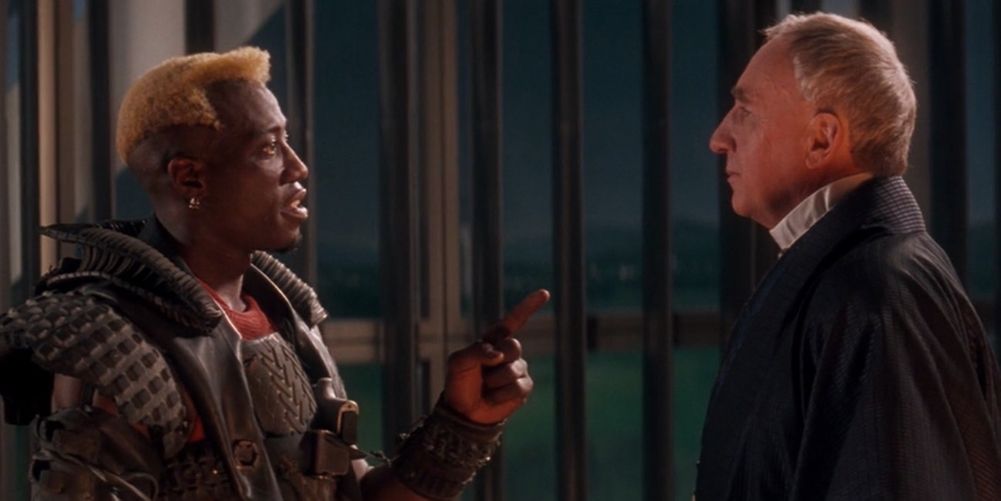
Dr. Cocteau embraced the notion of fighting fire with fire. This was what led to his scheme to thawing Simon Phoenix from his cryo-prison. Control over the offense-free state was the desire Dr. Cocteau strived for. Edgar Friendly, the untamed rebel leader of the underground world, stood between him and complete control.
Dr. Cocteau gambled with eliminating the free-thinking rebels with an assault from the ultimate free-thinking assassin, Simon Phoenix. Dr. Cocteau’s order became an immense one when his rabid hitman managed to outsmart him. This was due to the fact to Dr. Cocteau had become too comfortable in the perfect society he articulated.
Civilized Society Vs. Underground Society
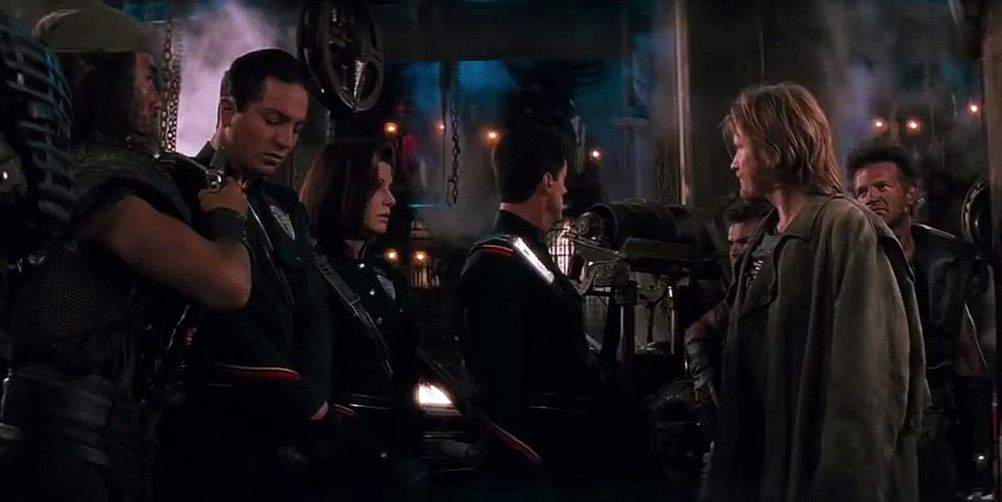
The futuristic backdrop within Demolition Man was one to be deeply explored. The subtle friction encased within the story was between society aboveground and society underground. The above, San Angeles, was a society of order that led to their offense-free perfection. However, this perfection came at the cost of citizens’ ability to express their individuality. The antithesis to this notion was showcased to the free-thinking underground rebels, led by Edgar Friendly. The downside to that ideal was the disorder that could get out of hand if left unchecked. The setting and conflict were set between Locked Order vs. Unlocked Order.
Unchained Culture
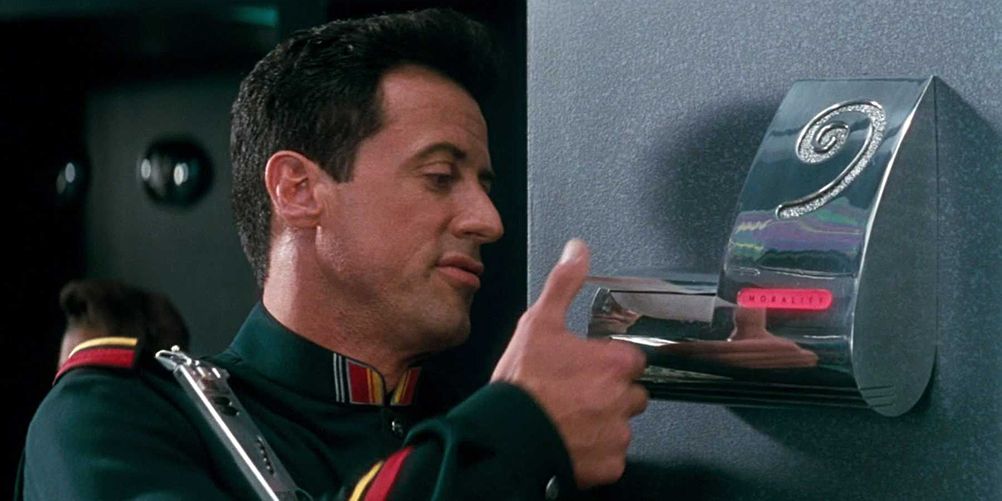
The blanket of Demolition Man was not the Stallone one-liners or Wesley Snipes’ bleached hairdo. The true element to be praised was the premise of a perfect society. Demolition Man displayed the notion that anything in excess is a bad thing. In this film, citizens are enslaved by a politically correct culture that is left unchecked. No middle ground was left for citizens to be themselves and express their individuality. As the murky underground rebels rose to clash with the pristine aboveground citizens, John Spartan acted as the mediator of compromise between both worlds. He truly understood the hellacious brutalities on both sides as well as their serene humanities.





